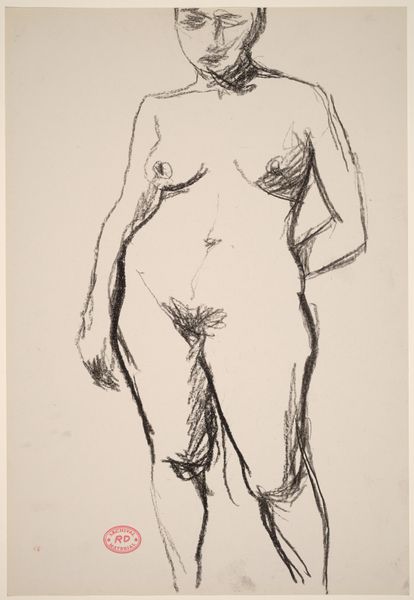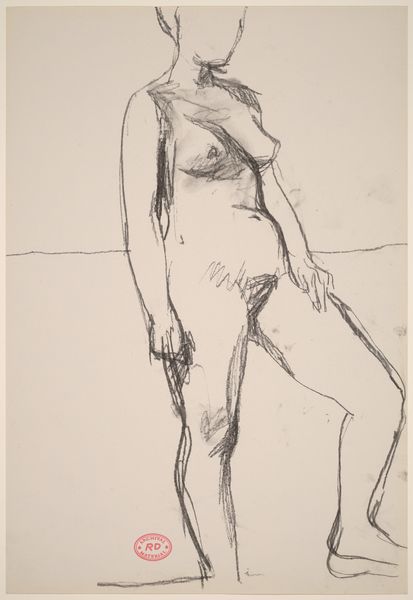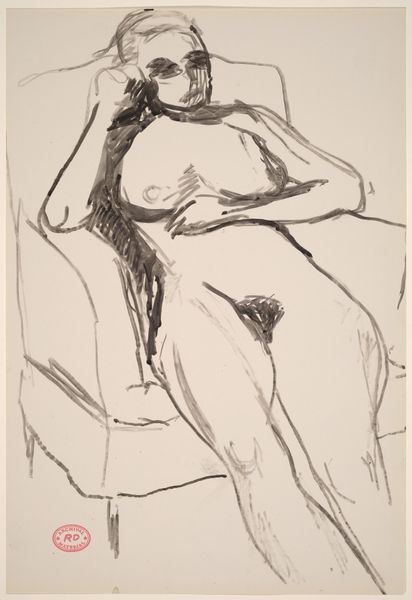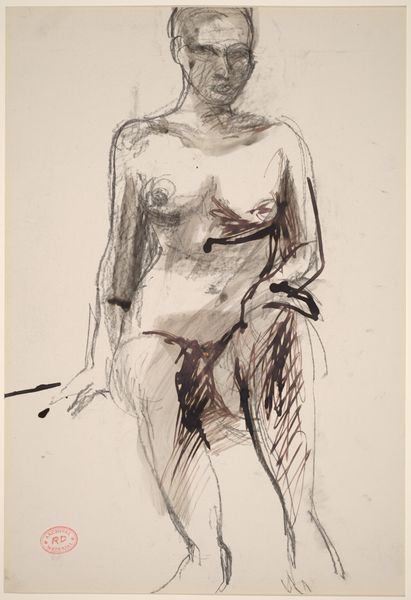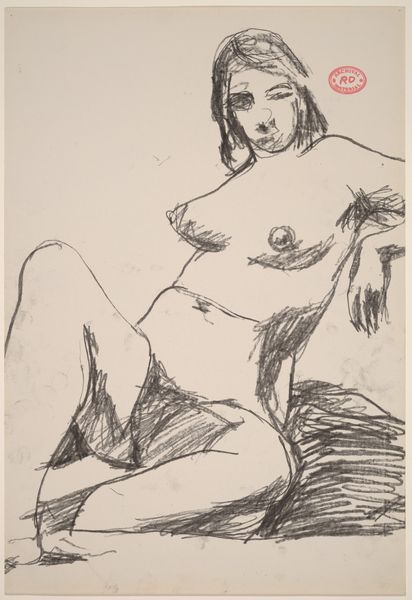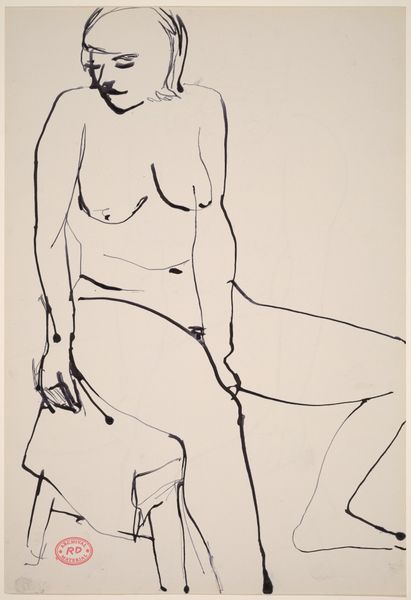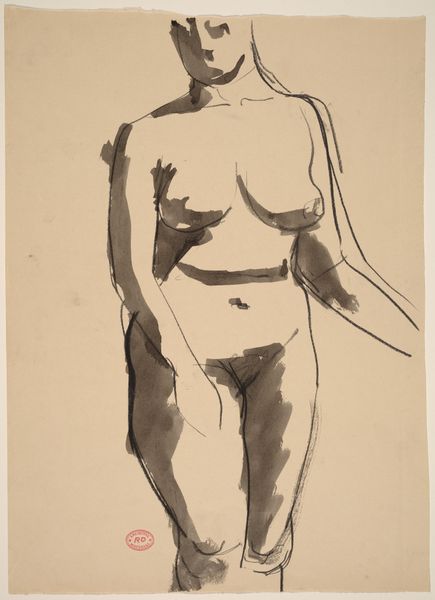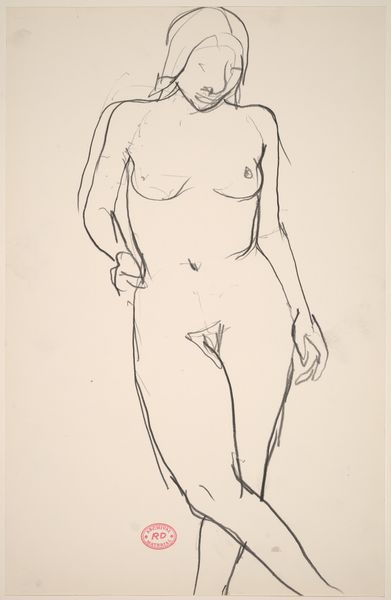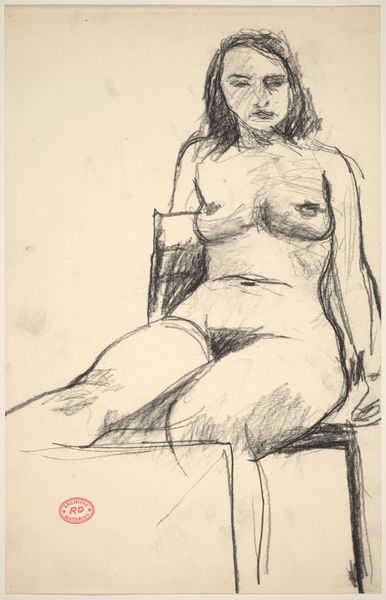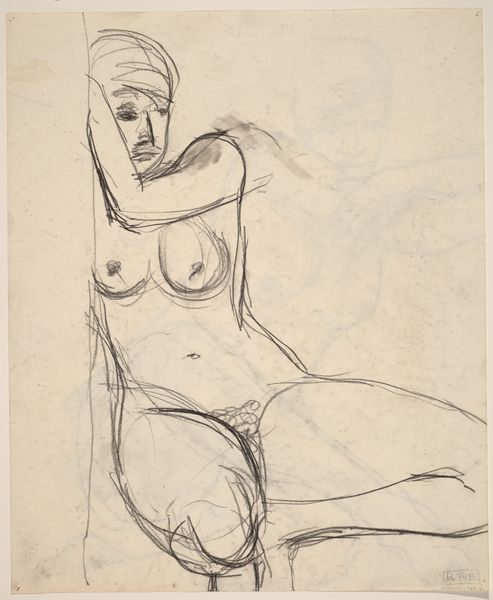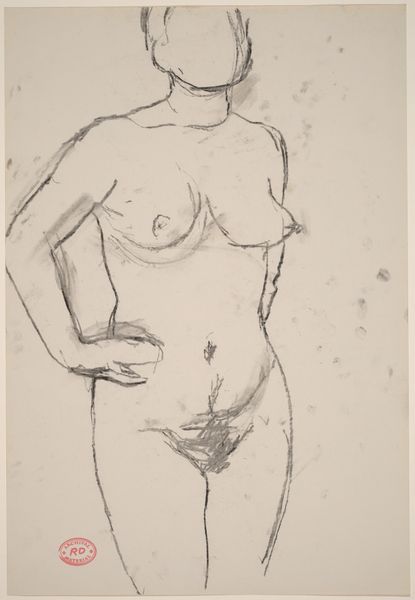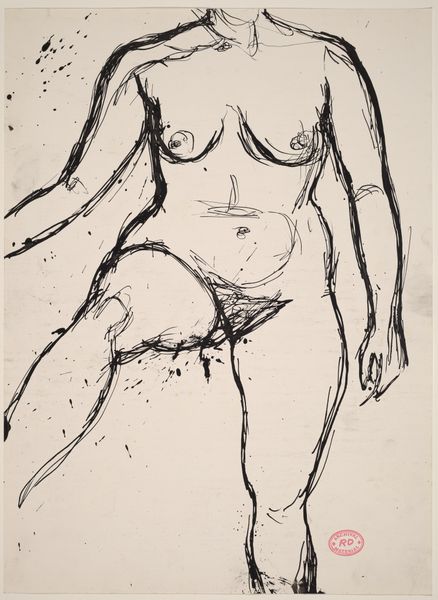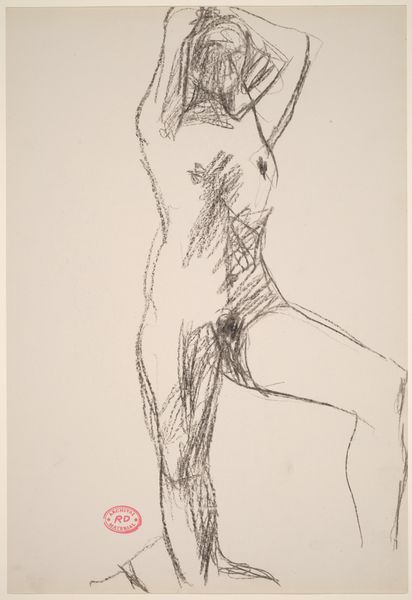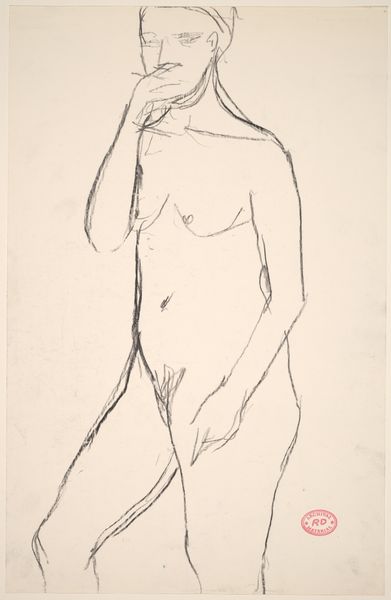![Untitled [standing nude with her her left hand on a support] by Richard Diebenkorn](/_next/image?url=https%3A%2F%2Fd2w8kbdekdi1gv.cloudfront.net%2FeyJidWNrZXQiOiAiYXJ0ZXJhLWltYWdlcy1idWNrZXQiLCAia2V5IjogImFydHdvcmtzLzM1ZmFiY2I1LTBhZDctNDRkNC04ZmYxLWRkZDc5NmI3NTlhNy8zNWZhYmNiNS0wYWQ3LTQ0ZDQtOGZmMS1kZGQ3OTZiNzU5YTdfZnVsbC5qcGciLCAiZWRpdHMiOiB7InJlc2l6ZSI6IHsid2lkdGgiOiAxOTIwLCAiaGVpZ2h0IjogMTkyMCwgImZpdCI6ICJpbnNpZGUifX19&w=3840&q=75)
Untitled [standing nude with her her left hand on a support] 1955 - 1967
0:00
0:00
drawing, ink
#
portrait
#
drawing
#
ink drawing
#
pencil sketch
#
figuration
#
bay-area-figurative-movement
#
ink
#
line
#
nude
#
modernism
Dimensions: overall: 58.1 x 43.2 cm (22 7/8 x 17 in.)
Copyright: National Gallery of Art: CC0 1.0
Curator: This ink drawing by Richard Diebenkorn, likely created between 1955 and 1967, presents an untitled nude figure. Editor: I'm struck by how immediate it feels. It's a portrait in motion, capturing not just a physical form but also a fleeting emotional state, maybe pensiveness or introspection? Curator: The symbolism of the nude, especially in Diebenkorn’s context, is interesting. While rooted in classical tradition, he distills it to something more intimate and modernist. There's a dialogue here between tradition and personal expression, wouldn’t you say? Editor: Absolutely. And I love how the lines aren’t precious; they’re searching, almost vulnerable. It avoids idealization and invites you into the artist's process of seeing and interpreting. It’s like he's showing us the mechanics of observation, not just the finished result. Curator: Yes, there is almost a tension in his gesture, between clarity and obscurity. Notice how he contrasts precise linework with areas of dense hatching to create shadow and volume. In certain regions the line fades altogether. That seems to be what creates such emotional weight. What does the obscured and absent line invoke for you? Editor: I feel like that is where the internal drama resides! The sketchy areas are like unanswered questions. It leaves me thinking about the vulnerability of existence and its mysteries, all those untold stories which Diebenkorn suggests exist right there on the surface. It gives her form depth but it gives the whole image… heart. Curator: Exactly, Diebenkorn has rendered the human form but also reveals an interior landscape. He captures both presence and absence within his portrait. It makes me consider how certain memories are also created and revealed. The incomplete rendering mirroring the fragmented ways in which we recollect things. Editor: That makes perfect sense, particularly because the composition itself feels intentionally incomplete, adding to that sensation that we’re privy to only a part of a larger narrative. He provides the audience a point of contemplation on an intimate scale. A special treat. Curator: Agreed, an opportunity to engage with an almost immediate and tactile vision into human feeling rendered through abstract figuration. Editor: Beautifully said. A vision indeed!
Comments
No comments
Be the first to comment and join the conversation on the ultimate creative platform.
